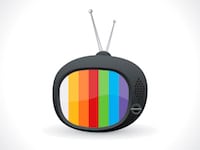Case Study: The Richly-Rewarding Impact of Television in Your Media Mix
 Editor Note: Veteran media supervisor Charlie DeNatale provides this case study about the dramatic role that television advertising has in an effective media plan. We’ve masked the client information, but for hospital and other healthcare advertisers this study illustrates the return from a balanced media mix of television with search and Pay-per-Click advertising.
Editor Note: Veteran media supervisor Charlie DeNatale provides this case study about the dramatic role that television advertising has in an effective media plan. We’ve masked the client information, but for hospital and other healthcare advertisers this study illustrates the return from a balanced media mix of television with search and Pay-per-Click advertising.
I’m reminded of the notion that “stopping advertising to save money is like stopping your watch to save time.” Admittedly, the particulars in the following case are a little different from Henry Ford’s observation, but the lesson rings true for advertisers in healthcare.
Recently, the data from a long-standing client provided a vivid contrast in tangible results with and without television media in the mix. (Spoiler alert: TV delivers a positive difference.)
Media supervisors like myself are constantly swimming around in a sea of numbers—performance data, media schedules and availabilities, research reports and other metrics—in order to drive the biggest and best return from a client’s ad budget.
For many years this client’s substantial media plan integrated (traditional) television advertising with digital (online) media, devoting about 50 percent of the budget to TV. A few years ago, the telephone inquiry responses began to decline. We know now that the nation’s economic state had a big part in the decline, but at the time, the assumption was: “Television no longer worked.”
The client elected to reduce their TV budget, trimming the investment by as much as 70 percent, and eventually going entirely dark on television media. Comparing response rates between year-over-year periods of “strong TV” with “no TV,” (and subsequently a return to television advertising) now reveals a clearer picture of the impact of that decision.
- Jan-Feb 2014 (with TV) = 185 Search/PPC leads, weekly average
- Jan-Feb 2015 (no TV) = 85 Search/PPC leads, weekly average
After six weeks of no TV (and the serious drop in inbound leads), the client returned to TV in week seven, and Search/PPC leads jumped from 85 to 150—illustrating the immediate impact of being back on TV.
For reasons of confidentiality we can’t reveal other particulars, but our industry and media planning experience affirms that the impact of television in the media mix is significant, and parallels exist in many business categories including the automobile industry, healthcare delivery and many others.
A solid, results-driven marketing plan and media mix is a challenge that requires professional help. What’s more, television advertising doesn’t fit every client situation. But there are at least two important planning lessons for hospital and healthcare marketers in this case example.
First, the side-by-side comparison—with and without television being the only significant difference—shows the important contribution of television advertising when integrated in the marketing and media mix with online tools.
And second, that pulling back on the advertising budget as a purely budget-saving measure is not a path to improving response or better results. Arguably, this client’s lost opportunity and missed new business was greater than the short-term “savings” in the budget.
For related reading, see:
- Media Buying Myths: Reducing Financial Risk in Healthcare Advertising
- Affordable, Creative Television Ads That Deliver Impact and Results
Or to talk about successful media planning and cost-effective budgeting and buying; connect with us at 800-656-0907.
# # #









